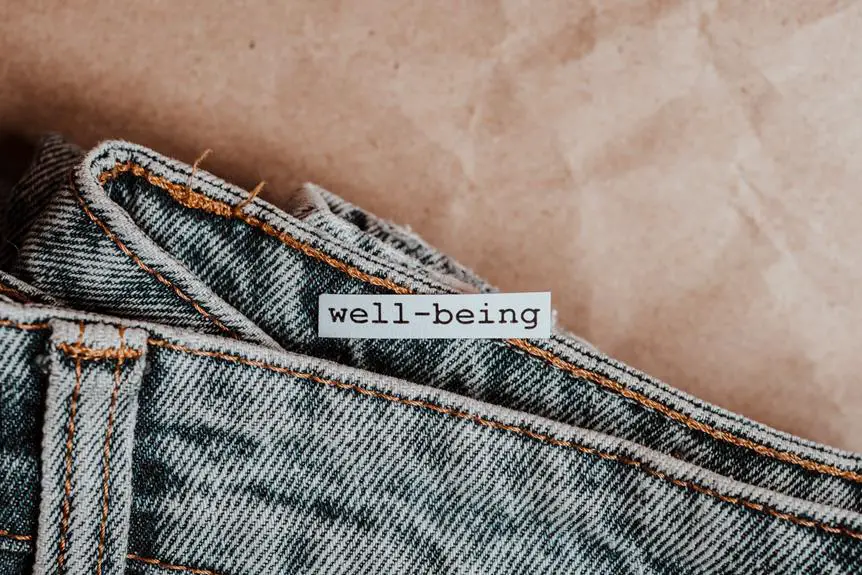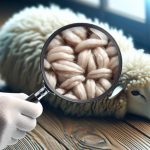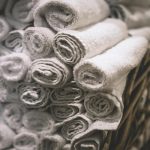If you've ever noticed a musty odor or discolored spots on your fabric, you may be dealing with one of the five common fabric mold types. Aspergillus, Cladosporium, Penicillium, Alternaria, and Stachybotrys are the culprits behind many fabric mold issues.
Understanding what these molds look like is essential for effective identification and remediation. In this guide, we'll explore the distinct visual characteristics of each type, enabling you to confidently recognize them.
Whether it's the powdery texture of Penicillium or the velvety appearance of Aspergillus, knowing what to look for can help you address fabric mold concerns with precision.
Key Takeaways
- Aspergillus mold on fabric and Cladosporium mold on fabric can cause allergic reactions and respiratory issues, and their identification can be challenging due to similarities with other common molds.
- Penicillium mold on fabric presents as blue or green fuzzy patches and can cause respiratory issues, allergic reactions, and skin irritation. Proper ventilation and humidity control are important for prevention.
- Alternaria mold on fabric appears as dark green or brownish-black spots with a velvety texture and is found in damp or water-damaged areas. It can cause asthma, hay fever, and skin irritation.
- Stachybotrys mold on fabric is a greenish-black mold with a slimy texture or black soot-like substance. It can cause respiratory issues, sinusitis, and irritation of eyes and throat. Prolonged exposure may lead to severe health problems.
Aspergillus
Identifying Aspergillus on fabric involves examining the texture and color for signs of green or black growth. Aspergillus is a common mold that can have serious health effects if inhaled or if it comes into contact with the skin. This mold is known to cause allergic reactions, respiratory issues, and can even lead to more severe conditions in individuals with weakened immune systems.
Prevention tips for Aspergillus growth on fabric include keeping the fabric dry, as Aspergillus thrives in damp environments. Regularly washing and thoroughly drying fabric items can help prevent the growth of Aspergillus. Additionally, storing fabrics in well-ventilated areas and using dehumidifiers can help control moisture levels and inhibit mold growth.
It's crucial to address any signs of mold growth promptly to prevent health issues. If you suspect Aspergillus mold on your fabrics, it's important to handle the items with care to avoid inhaling spores. Using protective gear such as gloves and a mask, and properly disposing of contaminated items, are essential steps to minimize the health risks associated with Aspergillus mold on fabric.
Cladosporium
Cladosporium mold on fabric appears as dark green or black spots and can pose health risks if inhaled or in contact with skin. Identifying cladosporium mold can be challenging as it shares similarities with other common molds. Under a microscope, cladosporium appears as multicellular, olive-green to brownish-black conidia-bearing hyphae. It thrives in areas with high humidity and can often be found on fabrics, such as carpets, curtains, and upholsteries, especially if they've been exposed to moisture.
Health effects of cladosporium exposure can range from mild allergic reactions to more severe respiratory issues, particularly in individuals with weakened immune systems. Allergic reactions may include symptoms such as sneezing, coughing, and itchy or watery eyes. Prolonged exposure or high concentrations of cladosporium spores in the air can lead to asthma exacerbation or hypersensitivity pneumonitis. Skin contact with cladosporium may also cause irritation or dermatitis in some individuals.
It's important to address any presence of cladosporium mold promptly to minimize health risks and prevent further contamination.
Penicillium
Penicillium mold on fabric presents as blue or green fuzzy patches and can cause health concerns if inhaled or in contact with skin. It's important to be able to identify this type of mold and take steps to prevent its growth to maintain a healthy living environment.
Here's what you need to know about penicillium mold:
- Identification: Penicillium mold often appears as fuzzy blue or green patches on fabric. It can sometimes be mistaken for other types of mold, so it's important to have it professionally identified to take appropriate action.
- Health Risks: Inhaling or coming into contact with penicillium mold can lead to respiratory issues, allergic reactions, and skin irritation. It's crucial to address any presence of penicillium mold promptly.
- Prevention: To prevent penicillium mold growth on fabric, ensure proper ventilation, control humidity levels, promptly address any water damage, and regularly clean and inspect fabric surfaces.
- Professional Assistance: If you suspect or identify penicillium mold on your fabric, consider seeking assistance from a professional mold remediation service to effectively remove and prevent its recurrence.
Alternaria
To continue, another common fabric mold type that you may encounter is Alternaria. Identifying Alternaria mold can be crucial, as it's often found in damp or water-damaged areas, such as bathrooms, kitchens, and basements. It appears as dark green or brownish-black spots with a velvety texture on fabric surfaces.
Alternaria exposure can lead to various health effects, including allergic reactions such as asthma, hay fever, and skin irritation. Those with weakened immune systems may also be at risk of developing infections from Alternaria exposure. It's important to address any mold issues promptly to minimize the risk of health complications.
If you suspect Alternaria mold in your home, it's recommended to seek professional help for proper identification and safe removal. Additionally, addressing moisture issues and improving ventilation in affected areas can help prevent the recurrence of Alternaria mold. Regularly inspecting fabric surfaces for signs of mold and taking preventive measures can contribute to maintaining a healthy indoor environment.
Stachybotrys
You may encounter Stachybotrys mold on fabric surfaces in areas with high humidity or water damage, such as basements and bathrooms. Stachybotrys, often referred to as black mold, can pose serious health risks and should be addressed promptly. Here's what you need to know:
- Appearance: Stachybotrys appears as a greenish-black mold with a slimy texture, often found on cellulose-rich materials like fabric, wood, or paper. It may also appear as a black soot-like substance.
- Health Effects: Exposure to Stachybotrys mold can cause respiratory issues, sinusitis, coughing, and irritation of the eyes and throat. Prolonged exposure may lead to more severe health problems, especially in individuals with compromised immune systems.
- Prevention: To prevent Stachybotrys growth, control indoor humidity levels, promptly address water leaks and moisture issues, and ensure proper ventilation in areas prone to dampness.
- Remediation: If you suspect Stachybotrys mold in your home, consider consulting a professional for remediation. Proper safety measures should be taken, as disturbing the mold can release harmful spores into the air.
Understanding the appearance and potential health effects of Stachybotrys mold is crucial for effective prevention and remediation efforts.
Frequently Asked Questions
Are There Any Health Risks Associated With Prolonged Exposure to Aspergillus Mold?
Prolonged exposure to aspergillus mold can lead to symptoms like coughing, wheezing, and chest tightness. Treatment involves antifungal medications. To prevent exposure, keep indoor humidity low and fix any water leaks promptly.
How Can I Prevent Cladosporium Mold From Spreading in My Home?
To prevent cladosporium mold from spreading in your home, regularly clean and dry areas prone to moisture, such as bathrooms and basements. Use effective cleaning techniques like using a mixture of water and detergent to scrub affected surfaces.
Can Penicillium Mold Cause Allergic Reactions in Humans?
Yes, prolonged exposure to penicillium mold in indoor environments can cause allergic reactions in humans. Health risks include respiratory issues. To prevent spread, address sources and consider removal difficulties, especially in fabrics and textiles.
What Are the Most Common Sources of Alternaria Mold in Indoor Environments?
To identify Alternaria spores in indoor environments, check damp areas like bathrooms and basements. Exposure to Alternaria mold can cause respiratory issues and allergic reactions. Keep these areas dry and well-ventilated to reduce health risks.
Is Stachybotrys Mold Particularly Difficult to Remove From Fabrics and Textiles?
Removing stachybotrys mold from fabrics can be challenging. Using effective removal techniques like vacuuming, scrubbing, and using mold-specific cleaners can help. However, it's crucial to prioritize fabric preservation while addressing stachybotrys mold.
- Tetron Fabric for Marine Applications: Durability and Use Cases - June 18, 2025
- Tetron Fabric for Outdoor Furniture: Weather Resistance and Care - June 18, 2025
- Tetron Fabric for Wall Coverings: Style and Application Tips - June 18, 2025






